When Supermassive Games launched the horror title Until Dawn in 2015, it became a party game where your friends could help you make the right decision to save the lives of doomed teenagers. With Hidden Agenda, Supermassive is offering the same kinds of choices.
Only one person had the controller in Until Dawn, and everybody else on the couch had to watch. But thanks to a new Sony PlayStation technology dubbed PlayLink, everybody can now join the game. With PlayLink, one player controls the PlayStation 4 controller. But as many as five others can use their smartphones to vote on what choice to make in the game.
Will Doyle and Jez Harris, two of the game’s leaders at Supermassive, said they wanted to build on what they achieved with Until Dawn in the story of Hidden Agenda, where you have to stop a serial killer. The game features realistic human faces, and its cinematic style is meant to drawn in non-gamers. The game debuted on the PlayStation 4 on October 24. I talked with Harris and Doyle about designing the game.
Here’s an edited transcript of our interview.
June 5th: The AI Audit in NYC
Join us next week in NYC to engage with top executive leaders, delving into strategies for auditing AI models to ensure fairness, optimal performance, and ethical compliance across diverse organizations. Secure your attendance for this exclusive invite-only event.
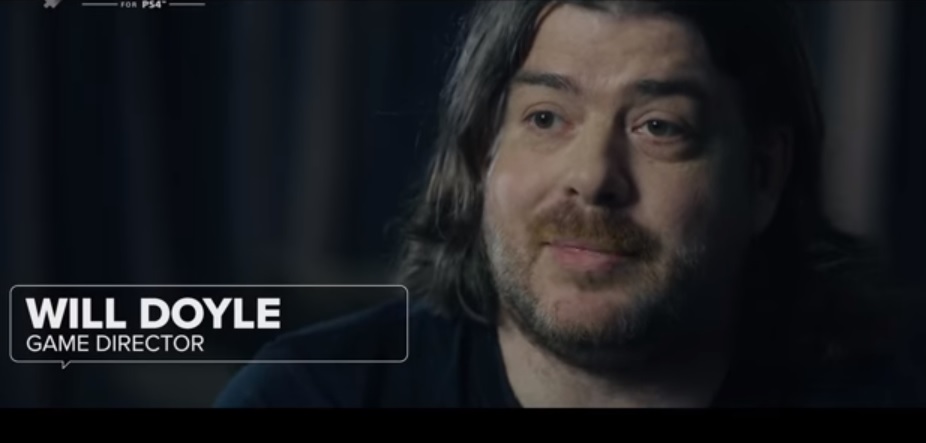
Above: Hidden Agenda game director Will Doyle of Supermassive Games.
GamesBeat: I started out in this space by playing Until Dawn, and then declaring it my favorite game of the year. That was a lot of fun for me. When I was playing that, I had the experience where my college-age kid brought her friends over and we all played it together, with everyone shouting out what decision to make. Is that sort of where this started for your? What’s the background of the project?
Will Doyle: We certainly saw how people had responded to Until Dawn, especially on streaming sites. That inspired a lot of the direction we’ve taken with the game. Obviously, with Hidden Agenda, it’s a game about choices, about dilemmas, about tricky decisions. Every choice in the game is voted on by the people sitting around the couch playing it. The response to Until Dawn was very much in our minds from the beginning.
GamesBeat: How many people are able to play?
Doyle: We support six players together using mobile phones or tablets. Any Android or iOS device will work.
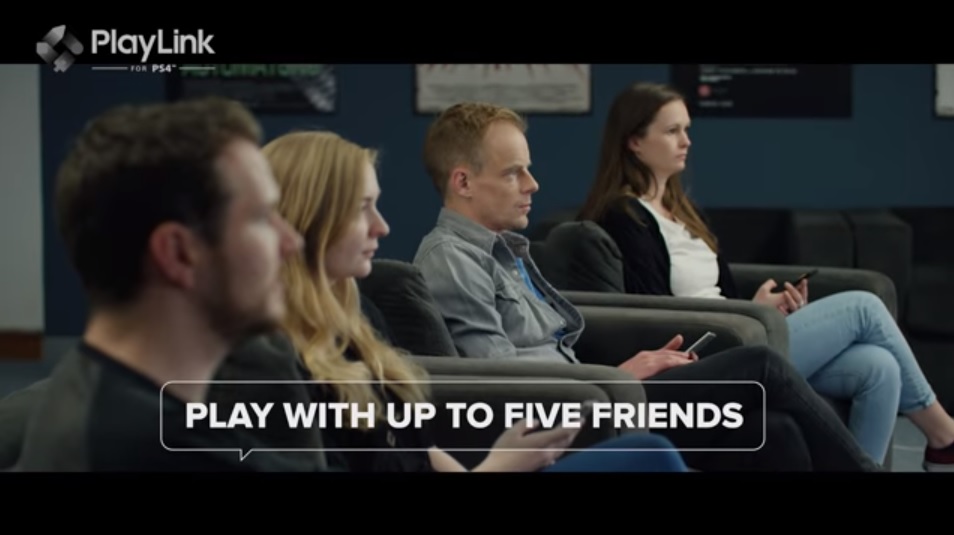
Above: You can play Hidden Agenda with six people altogether.
GamesBeat: How did you settle on that number as the ideal?
Jez Harris: I think in part, the logistics of supporting any number of devices — I don’t actually know offhand precisely what the maximum number of PlayLink devices we can support is. But we were always keen to push it as high as we were able to go. For various reasons in development we settled on six. From a UI perspective, going much higher than that would have caused us some difficulty.
It’s also a just a decent-sized crowd. Hidden Agenda has always been about replacing a movie night. That’s been our intention. It’s a crime thriller. It’s two or three hours long. It’s there to be played instead of a movie night. Six feels like a decent party size.
Doyle: Also, during development, we had board games and card games on our mind quite a lot. Similarly, that seems to be a top end number for those types of products as well.
GamesBeat: I talked with the Planet of the Apes game director recently. There are some interesting components that go along with PlayLink. It happens that their game is highly realistic. Yours seems to be in that style as well. Does that seem to work well with a movie-like experience?
Doyle: We wanted something that was really accessible to everyone, whether you’re a gamer or not. We wanted to create something where you could invite your friends round who don’t normally play games and they’d get a lot of enjoyment out of it. At Supermassive we do pride ourselves on making really visually attractive, cinematic stories. We wanted something that wasn’t off-putting. Centering the game very much around story choices, rather than specifically moving characters around and so on fitted really well, and certainly fitted what PlayLink is trying to do.
Harris: Again, with what Until Dawn did, and what you were mentioning about groups of players — a lot of non-gamers really embraced it. A lot of that comes from the fidelity of those characters and performances we get. Using that top-end tech, although it’s just cool as well, it’s there for a reason. We’re trying to make something that’s not off-putting to people who don’t really know games. A lot of that comes from connecting with human characters, which we get from those performances and those facial expressions and all the rest of it. Ten years ago you weren’t getting that out of computer game characters, but now we feel we can stack up against more traditionally accepted forms of media.
Doyle: It fits very well with the crime thriller theme as well. Everyone in a crime story, everyone has their own secret motivations. It’s great to see the acting come across in the fidelity we’ve got.
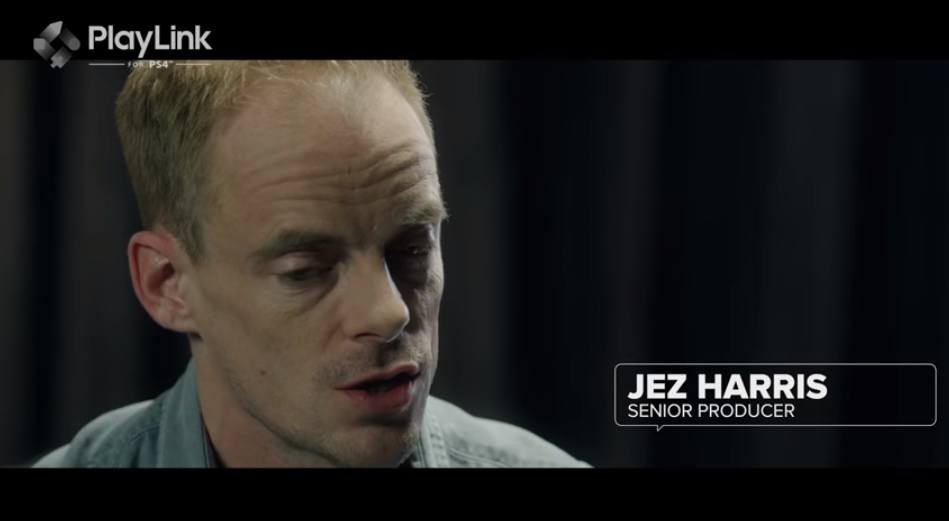
Above: Jez Harris of Supermassive Games.
GamesBeat: How did you incorporate PlayLink? What’s easier for you this time around if you have something like PlayLink integrated from the beginning?
Doyle: It’s really hardwired into the gameplay we’re doing. In Hidden Agenda you have a couple of modes, story mode and competitive mode. In the competitive mode, the game is based around a group of friends playing, and throughout the story, one of you will receive a hidden agenda, a secret objective. That player will move around randomly as you play through the game. They’ll see that on their device. They’ll actually receive secret information, which is something we couldn’t do so easily with a controller.
In story mode, the game at times just asks which of your friends represents a certain quality. It might ask, “Who’s the bravest in the room?” You vote on that secretly. You look down on your device and see different cards with different players’ names on them and you pick one. For this kind of plotting-against-each-other gameplay it work really well.
Harris: Because you’ve got a hidden screen. It’s also the accessibility factor. We’ve been trying to make an experience for people who aren’t necessarily gamers. It’s no secret to say that a Dual Shock can be quite intimidating to your mom or dad, anyone who doesn’t play games. But most people these days are comfortable with a smartphone. They’ve all got one. You can have those six players and everyone just pulls out their smartphone and downloads the app and gets on with it.
Will and the guys on the design front have been very keen to emulate established and known mechanics in terms of the control side of things. When you’re using the smartphone we’re not asking you to do anything particularly complex or fancy. You’re just swiping left and right. It’s all fairly self-explanatory. It’s an easy game to play from the user’s perspective.
GamesBeat: It reminds me of things like the Werewolves tabletop card games.
Doyle: We’ve found that people, when they’re using their devices, they actually kind of hold them like a hand of cards. When they’re given their secret objectives, people will pull back in their seat and hide their screen from the people next to them. It adds something tactile to the fun of it.
Harris: Again, it ties back to trying to push a good deal of the experience into the room. It’s not about what’s on screen as much. It’s about what the people next to you are up to. When you’re trying to work out who has got those hidden agendas, as much as it’s just about maybe trying to sneak a look at their screen, it’s also about looking around and seeing how shifty someone looks, what expression they’re holding. Trying to have that conversation and discussion about what choices to make amongst the group. It all works surprisingly well together.
Doyle: It creates some situations we’ve found that are quite fun where it’s different depending on who you play with, as well as whichever branch of the story you go down. Each game is different depending on which of your friends is present.
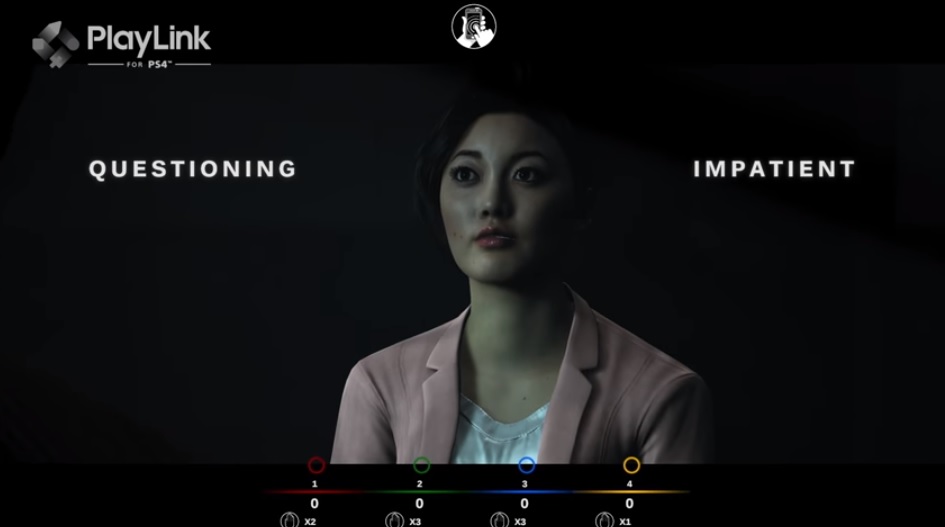
Above: Can you make the right choice in Hidden Agenda?
GamesBeat: I wondered how similar it is to Until Dawn in terms of that butterfly effect and the many different possible endings. What’s similar and what’s different in that respect?
Harris: It’s built around the sense of jeopardy that all the characters find themselves in. Until Dawn was obviously a horror movie, if you like, and this is a crime thriller, but what they do have in common is the players in the story are all vulnerable. The sense of who can live and who can die is pervasive throughout. It’s not as big a part of it in Hidden Agenda as it was in Until Dawn, which was very much based on the idea that anyone can live and anyone can die – that was the main motivation for playing in some ways. With Hidden Agenda it’s not all about that. But everyone is vulnerable.
The story is profoundly branching. It’s a shorter experience, deliberately shorter. We wanted to make it this thing that could be played in a single sitting with a group of friends, just like watching a movie. We wanted a story that’s wrapped up in the course of a single evening. But it’s going to be a very different story depending on who you play with and how you play it.
GamesBeat: How many decisions might you make in a single game? What have you found works well as far as how often you want to put in these decision points?
Doyle: We have to have a frequency of choices that ebbs and flows according to the drama of it. With the choices, we have something we call the ripple effect. Every choice you make is like dropping a pebble in a pond. If you drop small pebbles, they may ripple out and just affect relationships in one scene, or affect something that’s coming up in the near future. But certain decisions are like dropping rocks in. That creates huge waves that may lead to the deaths of characters or major branches in the story. We definitely have this challenge when we make these games as far as how we position the flow of the narrative against the gameplay. It certainly does ebb and flow as you play through.
GamesBeat: Can the game vary in length depending on how you play?
Harris: It depends on the group you’re playing with. Some groups we’ve seen, amongst ourselves and in user testing, might sit and spend 10 minutes arguing over what they’re going to do in a given situation, which extends the whole thing by quite some margin. But anything from two to three hours is about standard for each playthrough. Some of it depends on the choices you make. There are slightly shorter or slightly longer versions of events that can take place. You’ll spend at least a couple hours with it for a single playthrough.
Doyle: When you make a choice, if it’s a tie, you need to get to a majority to move on. Some groups have literally sat there for 10 minutes arguing about stuff.
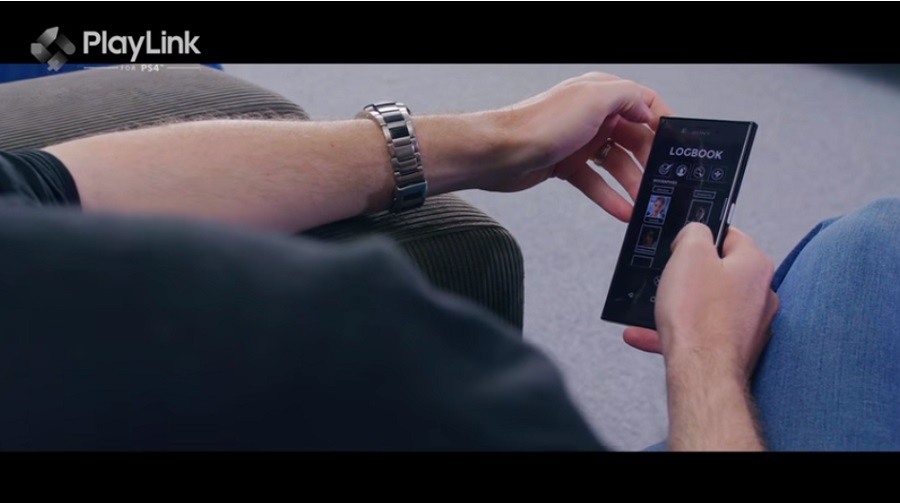
Above: You may get a secret message from the Hidden Agenda game.
GamesBeat: What kind of feedback have you gotten from watching people play?
Harris: As a studio and through Sony as a publisher, we do a lot of user testing. All through the production we’re putting it in front of groups of players and getting feedback to hone mechanics and get the story balance right. We have some good footage. Lots of people having a great time with it.
Doyle: It’s especially the case with PlayLink. It’s a new thing, and we’re trying to appeal to people who aren’t necessarily gamers first and foremost. We’ve done a lot of testing around that to get the best out of it.
GamesBeat: I got a good laugh out of the videos you included in the Until Dawn appendix.
Harris: Right. With Hidden Agenda it’s not really about scares in the way Until Dawn was. The human side, as we said, really comes from those discussions and arguments and fights over what to do next.
GamesBeat: What conclusion have you drawn as far as what kinds of stories are good to tell in this way using PlayLink?
Harris: For me, I think a story in which the stakes are high is important. This may not be true for everyone, but it’s certainly true for the approach we like to take. Characters need to be vulnerable. That risk — the choice has to really matter in the way that we would like. The notion of life and death has to come into play at some point. It’s not every choice, and you’re not necessarily aware of exactly which ones might have a huge impact, but knowing that the choices do matter all the way through is vital. A crime thriller, where it’s all about trust and deception and life and death, is a great fit. It’s not the only fit, but it’s a great fit.
Doyle: A balance in your story is also important. The stuff that works well for us are choices where there’s no right answer. Creating a story that has lots of dilemmas generally means you need characters that are painted in shades of gray. There’s no obvious good guy or bad guy. There are lots of questions around people.
Harris: There’s no right way through this game. That’s a focus.
Doyle: Absolutely. We spend a lot of time making sure our stories feel great whichever path you take. That certainly informs a lot about who the characters are and how we shape them.
GamesBeat: Is it taking as long to make this as it did to make Until Dawn, or was that more work simply because it was the first of its kind? Are there any technical improvements in this game?
Harris: We’re using the Unreal engine for Hidden Agenda, which is not something we did on Until Dawn. That’s been great for us. We’re getting phenomenal results out of that. In terms of how long it’s taken, Until Dawn did take a fair bit longer. It’s a very different experience — different game, different scope, different platforms as you might recall. It gestated quite a bit over the course of its development. This has been a great fun project, really. We’ve learned an awful lot about our processes and technical changes.
The thing we’ve spent a lot of time working on, which is arguably the hardest thing we’ve had to look at with Hidden Agenda, was really figuring out how to formalize the competitive nature of a narrative-led game. That’s not something people have done a lot before. That took a while to settle on. We went through some periods of overcomplication and asking perhaps a bit too much of the mechanics, or too much of players in fact — all the information we were asking them to retain in their heads about the story as we were trying to mark them on their successes and failures as they played through.
That got refined into what is now, we think, a very engaging and understandable, but quite deep scoring system. It’s all based around the hidden agendas and this notion of trust and honesty in the room. It’s taken a while to get there, but it’s where we want it to be now.

Above: Samantha, played by Hayden Panettiere, in Until Dawn. She did a great acting job.
GamesBeat: Until Dawn had a measure of success as far as replayability there, with the goal to save all eight characters. Is there something here that makes it highly replayable as well?
Doyle: We have numerous ways you can go through the story and reach a completion. But we do like to think, again — with the competitive mode and hidden agenda mechanics, that makes it a bit like a board game. You can play it a number of times, even experiencing the same story, but through the hidden agenda it encourages a lot of repeat plays. For ourselves, we’ve had a good feeling recently, because in testing it every day we still enjoy playing it ourselves because of this aspect of putting the gameplay into the room. It really is different every time.
GamesBeat: With PlayLink, technically, does that work very quickly? Do you have to account for any kind of latency in the process of coordinating with all the phones? I’m curious about how fast a response it has and how fast a response you need to do things. Do you have timed decision-making, for example?
Harris: We haven’t had any problems with latency and so forth. We’re comfortable with the fact that we have quick-time events in the game and timed choices, and that’s caused no problems at all. In terms of how PlayLink is set up, you connect the devices to the same wi-fi your PlayStation is on at home, and as soon as you’ve done that you’re all hooked up and good to go. I’m sure some different people will have different quality in their home network setups, but it works as you’d expect it too — simple, straightforward. It makes the whole thing very accessible. We haven’t at any point had to think, “We can’t do that because of latency.” It just works.
Doyle: We’ve had a lot of experience working with new technology, and PlayLink is just another one. It’s always fun to see people who haven’t played games as much come in, sit down with their friends, and leave having really enjoyed themselves. That’s fulfilling for us, to see that it’s working for us in that respect. And in terms of making a new story, we’ve introduced a bunch of new characters here around a new theme. Doing a crime thriller is new for us. That’s been a great creative endeavor. It’s been really good fun.

